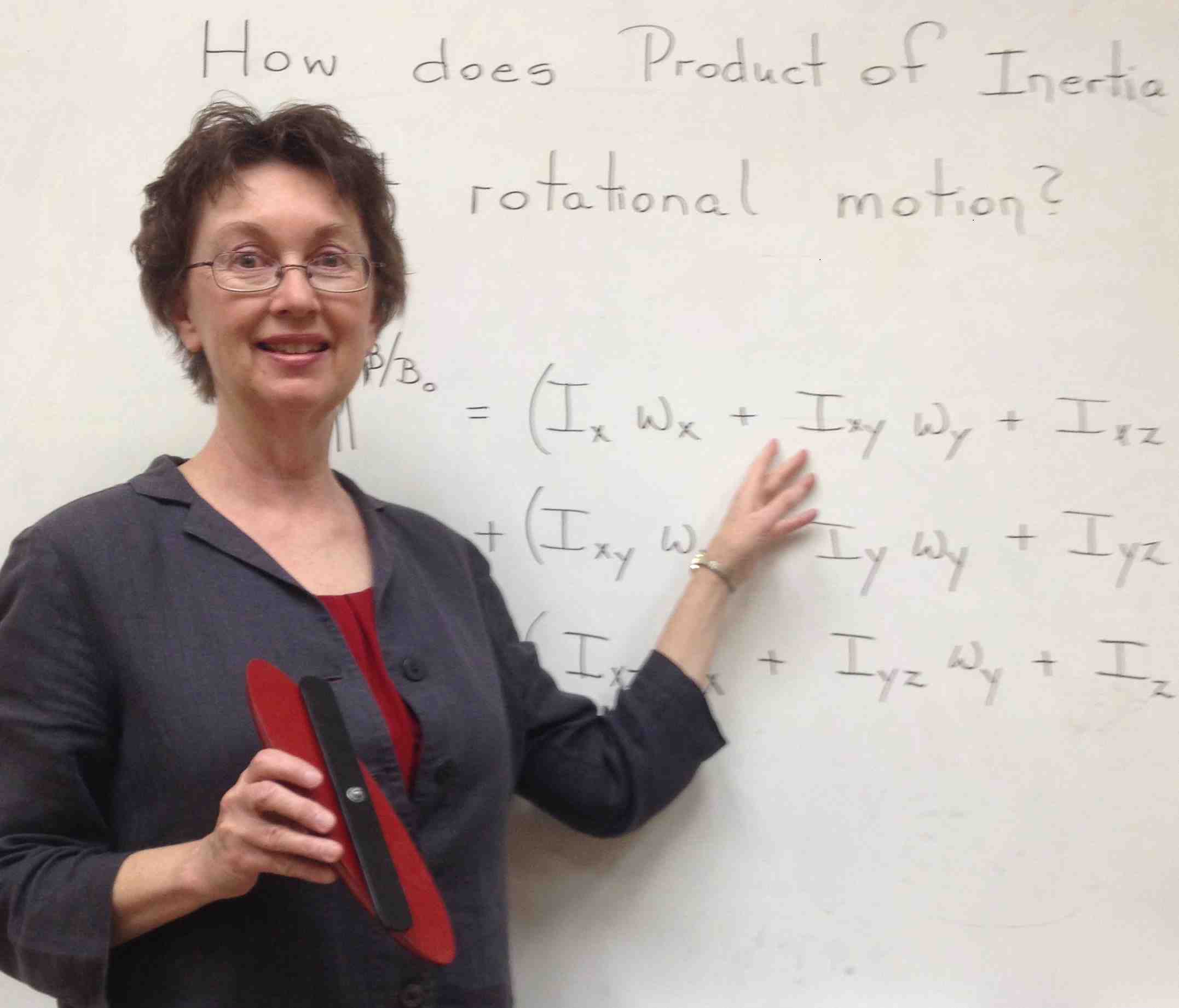In my 60+ years of dynamics in academia and industry, I have not seen a book as effective at training one to do mechanics. It is accurate, precise, concise, and relevant.
Rather than just providing information and examples, Mitiguy's books ensure the reader can actually form and solve equations for forces and motion. Don't read it. Do it.
Paul Mitiguy was the first person I talked to when I decided to develop a new dynamics class at Harvey Mudd. As an early adopter of his book, I have seen its direct benefit to students now finishing graduate school or several years into their professional careers. In one semester, my undergraduate students learn to form equations of motion for complex systems, solve coupled nonlinear ODEs to simulate system behavior, and build physical prototypes to confirm their analyses. Several have been inspired to continue work on projects after the class and are publishing their work.
On a recent evaluation, one student wrote, "This was one of my favorite classes. I think I might want to go into dynamics in grad school because of this book." Others regularly express similar sentiments!
Dr. Mitiguy's book makes dynamics much easier to understand than traditional textbooks. It has changed the way dynamics is taught and learned at University of Florida.
Based on recommendations of students who used the book in my class, students who didn't take my dynamics class and wanted to better learn the material asked to borrow my spare copies of Dr. Mitiguy's book. That's a strong recommendation for a textbook!
Mitiguy's text is by far the best book for undergraduate dynamics students. It is thorough and mathematically rigorous. Instead of following a rote procedure, his book challenges students to think and write equations of motion in which they have confidence. He has engaging step-by-step problems, leading students to do each step and draw their own conclusions. The book truly leads students to think deeply about dynamics, asking tough questions and pursuing their own ideas. It has thought-provoking examples from several fields, comparing and contrasting approaches to problems.
My students love the rigorous approach, great illustrations, and thoughtful attention to detail. I cannot imagine teaching the first course in vector dynamics with any other text. The dynamics classes in our department consistently use Paul's philosophy and notation for rigid body dynamics and astrodynamics (undergraduate and graduate).
Students need modern physics, mathematics, and computational techniques to be at the forefront of dynamics and control of multibody systems.
Professor Mitiguy's dynamics books breath life into my biomechanics and robotics research and teaching. The books focus on concepts, context, and calculation and move beyond information and knowledge to skill and wisdom.
Dynamics was the most challenging course for me as a UC Davis undergraduate ME student. Despite two quarters of good instruction and constant office hour attendance, I was mostly lost in dynamics and could do little with what I learned. Years later as a Stanford graduate student, I was privileged to take the graduate dynamics series taught by Prof. Tom Kane and David Levinson, and finally learned a rigorous and systematic to dynamics.
Paul Mitiguy dynamics textbooks have masterfully built upon Kane's legacy. They are not only rigorous and precise, but highly accessible for both students and teachers. I especially appreciate the undergraduate book's emphasis on vectors to facilitate geometry, forces, and motion. The book's homework/example problems are engaging and effective for understanding the concepts presented in the chapters. If Mitiguy's book was available when I was an undergraduate, it would have helped me master dynamics much sooner. I highly recommend it!
Mitiguy's textbooks represent the best money you will spend in school. Some textbooks are dry and boring, some have moments of brilliance, some have impressive titles and gold leaf to make your shelf look good, some make excellent fire starter.
And every now and then, there is one that is actually useful, not just in class, but afterwards in the real world, when you need to go back and look something up or relearn something quickly and efficiently. This is one of those books. It is good to have in the class, but invaluable after you graduate.
Mitiguy's dynamics book provides a modern computational and mathematical framework that makes engineering relevant.
It gave me the school-to-work skills I needed for my neuromuscular biomechanics research. I am confident that I have solid training for future professional work.
"This book was an obvious choice for my Junior-level dynamics course. The homework is self-guided, the lectures are easy to prepare and deliver, and the approach to kinematics far surpasses any other textbook that I have encountered."
From experiences with students struggling with algebra to working with the world's best engineers, we need books that engage and interact for self-paced learning.
If Dr. Mitiguy's books were your work-out plan, you'll be fit, trim, and have real skills for mechanics and computation. Great guidance, creative, and constant feedback.
I work on cutting-edge biomedical devices and mechanical designs. After 25+ years as a professional design engineer, I needed to improve my mechanical abilities. I used Dr. Mitiguy's mechanics books to enhance my ability to do geometry via vectors, and to better understand forces and motion, and am more confident in the process of designing real equipment.
The chapters are clear and concise, progress logically, providing any necessary background material, as they build in complexity. I found the exercises engaging as they guided me to synthesize increasingly complex processes.
Dr. Mitiguy's book is a clear, bottom-up, vector approach to 3D forces and motion. My students commented how this approach "made sense" as compared to their peers' experience in traditional classes. The book's emphasis on computational tools makes simulation a regular part of homework. Problems demonstrate behaviors impossible to predict from a traditional 2D "snapshot" view of dynamics.
As a first-time instructor, this book was a joy to work with. The sequence is logical, the examples are clear, and the self-guided homework is a boon to both students and instructor.
This alternative approach to dynamics is very clear and easy to understand. The textbook does a great job of laying out the foundations for vector-based dynamics that can be applied to any situation. Rather than presenting various equations that have no derivation, the approach teaches how to derive the necessary equations for the given situation. This came in handy for my ME 154/106 project because the linkage system used did not resemble the examples taught in those classes. I was able to define and derive equations based on my situation. This textbook is a must have for any mechanical engineer."
"The math we learned in Professor Leeper's ME101 class allowed me to step into my research at Stanford with ease. I wouldn't have been able to do this level of computational work (i.e. 3D image reconstruction) without the rotation matrices we studied. Mitiguy's textbook was my saving grace in my Stanford Summer Research Program."
Mitiguy's book is thorough, engaging, and very easy to read. What sets this book apart? Fun homework with high expectations.
I spent the time and learned. It is hands-on, minds-on, can-do. I loved this book and so will you!
As a new faculty member with several courses, I wanted a book that facilitated my teaching. I also wanted a book which taught students to use 3D dynamics in a straightforward manner.
The homework is self-guided, the instructor edition makes grading simple, and it produces students ready for research and work.
I used the textbook when I taught graduate dynamics at San Jose State University. My students found the examples very illustrative.
Dr. Mitiguy provides detailed steps in his examples which make the book easy to follow. It is a good textbook for those students that like to learn by doing.
As an early adopter of Mitiguy's Control, Vibration, and Design of Dynamic Systems for a large class of diverse students, I appreciate the focus on time-domain tools and the connection of s-domain tools to time.
I have found the book useful for teaching, learning, and as a professional reference. The material is interactive and engaging and the homework provides step-by-step guidance through meaningful problems on a wide variety of important topics.
"Design of Dynamic Systems helped me see all the theory I had taken in related areas in a totally different light, so by the end I was able to relate the mechanical engineering world, the electrical engineering world and the math world and explain the workings of complex coupled phenomena -- all with the power to simplify."

















